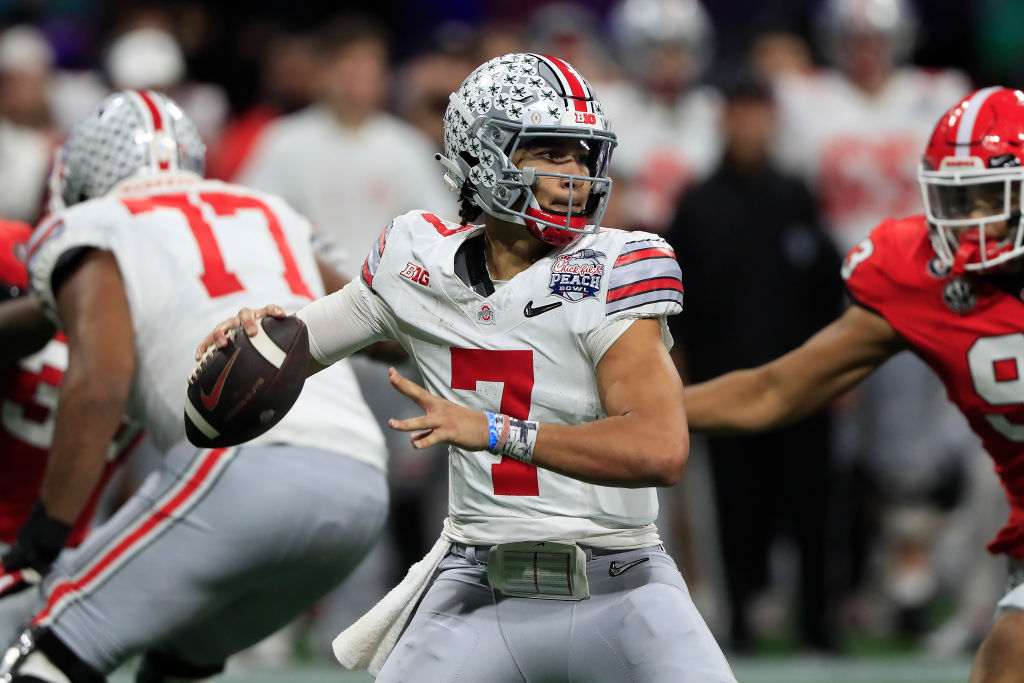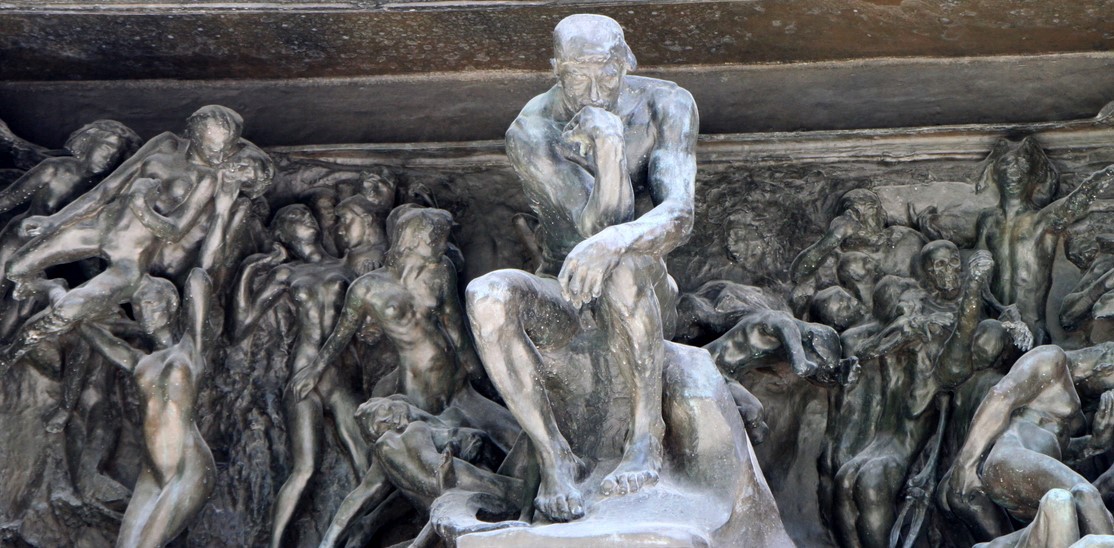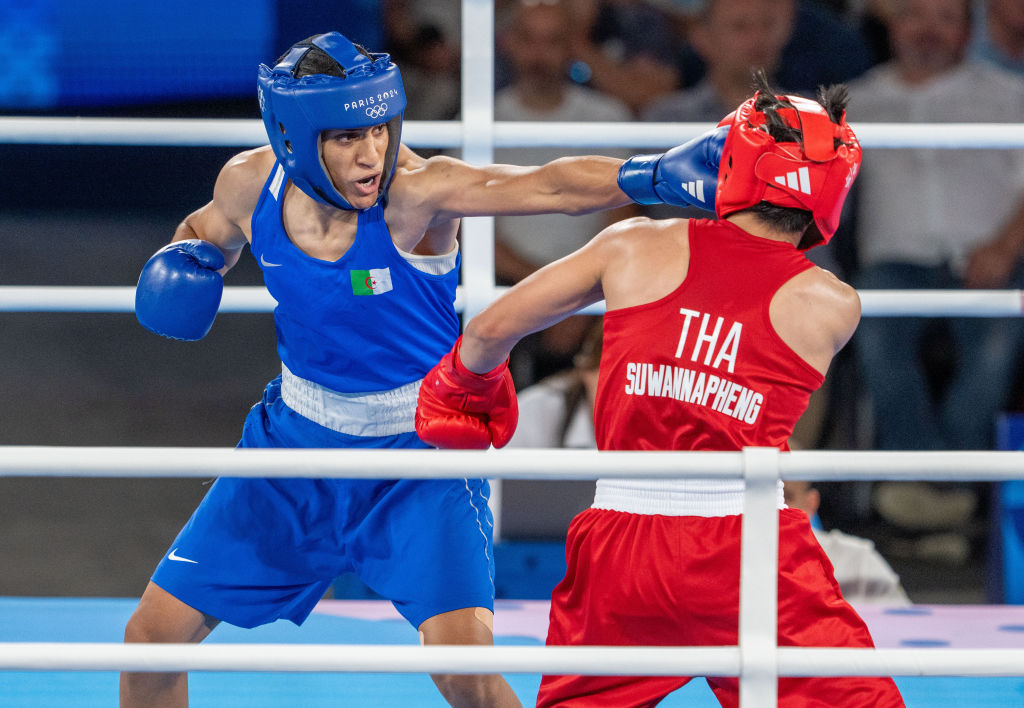Higher education has always been a religious quest.
Calling Foul on Big-Time College Sports

Paying top athletes has been an unmitigated disaster for higher education.
Over the last ten years, limits on what college athletes are paid for their services have been slowly dismantled by a series of legislative and judicial actions at both the federal and state levels.
A common refrain of supporters of these changes is that professionalization did not harm the box office value of the Olympics, so it should not harm the big business of college sports. As the Texas Public Policy Foundation noted in an upbeat 2022 report on these changes: “The games are going on, media rights are increasing, athletic conferences are expanding, and the industry is a popular and as powerful as ever.”
This is an odd analogy. The Olympics is a standalone organization whose purpose is sports; it is not the sports arm of an organization with another, ostensibly higher purpose.
Changes to college athletics should be evaluated on how they affect higher education, not how they affect sports. Viewed from that perspective, big-time college sports is a blemish on higher education. It is time to end this charade once and for all.
Big-time college sports refers mainly to top-level football. Everything else, including men’s basketball, is more or less secondary. The programs at the 130 universities that play in the elite “bowl” section of Division I (including 12 in Texas alone) accounted for 87 percent of all self-generated college sports revenues in 2021, an all-time high. Of that portion, one estimate suggests that about 65 percent comes from football, while men’s basketball and all remaining men’s and women’s sports roughly split the remainder. This means that bowl football generates more than half of all college sports revenues.
Put another way, the roughly 1,300 bowl-level football players generated revenues per player ($3 million) that are roughly 300 times the average revenues generated by all remaining 319,000 Division I and II players in all sports ($10,000).
Those revenues are soaring as television and ticket sales boom. The new-look college football playoffs, for instance, could be worth about $2 billion annually when all revenues are included. If you took ten percent of that total—$200 million—and distributed it as salary across the 100 or so active roster players on the 12 playoff teams, it would come to $166,000 per player just for playoff appearances.
The problem is further compounded when considering that NCAA-sponsored sports betting on NCAA games will soon capture some of the billions bet on college sports per year. Seven major universities have already signed multi-million dollar contracts with gambling companies that they now promote through their sports programs. The various sports are then “bundled” together and repackaged as entertainment deals. “We dramatically underperform across a whole bunch of other revenue raising opportunities,” said NCAA President Charlie Baker enthusiastically in June.
As these revenues have soared, the money tree has been shaken more violently by the players and their dollar-eyed supporters, aided by various court rulings and state laws. The result is that top sports schools are now offering in-kind benefits that go well beyond tuition costs to include life-time medical care, “cost of attendance” stipends, and “gifts” for good performance. It may not be long until athletes in some states are being paid de facto salaries to play, something made possible by a series of rulings and laws since 2014.
The bigger spigot, however, is the rights of college athletes since 2015 to negotiate “name, image, and likeness” (NIL) deals with corporate sponsors that want their marketing power and alumni donors who want their skills for their alma mater. This has created a new vocation that we might call the “student-athlete-marketer,” where revenues are mostly for males since these deals are outside of Title IX regulations. Top college athletes now have legions of agents, sponsors, handlers, advisors, and business coaches directing them to maximize their NIL potential. A Purdue-based NIL called The Boilermaker Alliance will be offering “exclusive content” about teams and athletes to donors, turning players into full-time “content providers.”
The new dispensation of de facto salaries and NIL deals merely brings into the open what has long been true: top college players are neither amateurs nor students—they are full-time professional athletes. Fans already knew this, and it does not bother them one bit. Allowing players to cash in on their brief moments of stardom will make fans love their teams more, being now relieved of the guilty feeling that mainly black men were being exploited for their entertainment.
But what does acknowledging this truth mean for higher education, which this spectacle supposedly serves? “The growth of Division I revenue sports, lifted by huge sums of money, is simultaneously exciting and scary,” wrote former Rutgers Athletic Director Robert Mulcahy in a 2020 memoir. “It creates feelings of unbridled power that is addicting and dangerous to a university’s health…. It teaches student athletes playing revenue sports to worship at the altar of money, gifts, and complete self-indulgence.”
Colleges now face pressure both to pay their top athletes more of the revenues they generate and to distribute those revenues more to female and minor sports. Since they cannot do both, myriad lawsuits will inevitably be filed, turning universities into sports legal defense organizations. California’s proposed College Athlete Protection Act would require colleges to pay their athletes, which NCAA President Baker told a conference in June would wipe out all programs in Division III, most in Division II, and even some in Division I.
As college sports have outgrown their origins as an adjunct to the well-rounded college experience, various excuses have been offered to explain why they should not be jettisoned.
One is that they bring in much-needed revenues. But this is not true. The median bowl football school lost $21 million on its athletics programs in 2021 according to the NCAA. Of the 130 programs, 121 lost money that year. Nor are there indirect benefits from donor giving, which studies show are not correlated to on-field success. Those losses were mounting as colleges were required to offer more generous benefits to players. The losses will grow as players grab a larger share of sponsorship revenues through NIL deals.
The knock-on effect of the NIL, and the broader money spigot bonanza for top athletes, is a complete disappearance of any attention given to education. Even before the new commercial surge, the claims to amateurism and education were razor-thin for big-time college athletes. They were estimated to spend over 40 hours per week on sports alone, leaving no time for school. An astounding 35 percent of all football players (40 percent of black players) and 52 percent of all basketball players (58 percent of black players) at the 130 “elite” Division I schools who were full-scholarship recipients and required to be full-time students failed to graduate in the 2019-2022 cohort, according to NCAA data (although some may have carried on or transferred to lesser schools after their playing days were over).
Most of them had no business being in these colleges in the first place, which is particularly true of black players. Using data from Theune and colleagues, I estimate that black students are overrepresented in sports at the 130 colleges compared to black non-athletes at these colleges (a measure of those who are academically qualified to attend) by a factor of 22 times in football and 48 times in basketball. In other words, most black athletes at the 130 schools would never make the cut academically. So even if they did spend more time on school, they would likely fail out.
But there is no danger they will hit the books anytime soon, because the insatiable demand for more college sports entertainment invariably leads to more supply. A college football season used to consist of 11 games, possibly 12 with a post-season bowl. Under the new playoff format in 2024, however, there may now be as many as 17 games.
Under NIL agreements, athletes now have the extra burden of negotiating and managing deals and promoting their products, whether on social media or in person. The California high school football player Jaden Rashada was fully-booked even before playing a college game. He was courted by various “alumni NIL groups” that offer money to athletes to play for their alma maters. After switching his intentions four times, he signed with Florida for a reported $14 million, which then fell through. Now he now is at Arizona State, clearly shaken by the chaos, not showing much promise in scrimmages, and with only one NIL deal, promoting bicycles. The joke goes that Rashada has become the name, image, and likeness of the NIL era.
Or consider the case of Louisiana State University gymnast Livvy Dunne. She is without doubt an accomplished athlete, the sort of person who might be used to promote, say, women’s education or any product where grit and determination make a good brand. But her various NIL deals (seven so far) are mostly for female clothes (Vuori, American Eagle, Under Armour) or male-oriented products that use sex to sell energy drinks (Accelerator) or sports magazines (Sports Illustrated). The teaser images for her SI swimsuit deal—she’s wearing a thong on the beaches of Puerto Rico with sand sliding down into her breasts and pouting lips calling to the camera—says it all. Her fellow LSU athlete, basketball player Angel Reese, known as “Bayou Barbie,” was paid to appear in the 2023 SI Swimsuit Issue, also mostly naked. Let’s stop kidding ourselves: these female athletes are selling soft porn in the name of LSU.
Since less than two percent of football or men’s basketball players will ever see action in a single professional game, this gutting of the educational premise of colleges and universities is dire. Remove the Stanford degree and broader education from a person like U.S. Senator Cory Booker and you get just one more angry, frustrated young man who was told he was destined to the big leagues and was then coughed out onto the streets with nothing to show for it. Higher education not only has a mission to educate, but a duty of care.
What’s to be done? There are three options that should be considered. The easiest one is to throw the doors open to professionalism. With this model, the 130 schools would continue to have football and men’s basketball teams, but those players would not be students and would simply play under the college name. Players could be fired for too many fumbles or a poor 3-point percentage. But as Washington State University’s athletic director said during a congressional hearing, “the notion that a student-athlete could be fired for underperformance undermines the very core of the educational mission.” He is right. The problem, as scholars like Andrew Zimbalist have argued, is that fans like to pretend their college athletes are students and amateurs. But nobody wants to watch minor league sports.
Another alternative is simply continuing to muddle through, as the NCAA and the various state legislators are doing with their requests for help from Washington. The colleges would continue to bump up in-kind benefits while helping athletes negotiate sweet NIL deals, notwithstanding legislative pressures to pay athletes and the legal risks of the colleges turning themselves into deal-makers.
But this only makes the educational failure more glaring. In 2015, the then-Big Ten conference commissioner Jim Delany wrote a scathing letter, “Education First, Athletics Second,” that urged a return to amateurism and education. “If we cannot defend the educational value of the student-athlete experience in the sports of football and men’s basketball, then we cannot defend the model as educational,” he wrote. “If we cannot defend the model as educational, then we cannot defend the model.” Delany proposed a mandatory freshman year of non-playing academic preparation, which would be followed with more rigorous academic demands during playing years. But his letter came just as the money spigot opened up, making education all but impossible for most major college athletes.
That leaves the nuclear option: beyond recreational participation, higher education and college sports are no longer compatible, a point made in a 2019 issue of Academic Questions, the house journal of the conservative National Association of Scholars, on whose board I sit.
Universities can and should encourage the formation of sports teams and should find ways to raise revenues from them in order to pay their costs and ensure they are not a drain on other activities. But students need to be admitted on academic grounds alone. They need to be enrolled full-time. And they should, like all students, be held to the same academic standards.
Colleges and universities need to “Just Say No” to big-time college sports. Once they are not offering multi-million dollar salaries and facilities, they will not have the countless problems that currently bedevil them. Players would sign agreements rejecting any claims to pay or special benefits beyond perhaps tuition. The costs for staff and facilities would be capped. Any excess revenues would go straight back into a college’s general fund. In other words, all college sports would look like Division II and III at present.
The most promising athletes would then follow the models in hockey and baseball, where top young talent is developed outside of the higher-education system, the “major junior” leagues in hockey and the minor leagues in baseball. And if female students want to sell their bodies off campus, it will at least not be considered part of their educational experience.
The American Mind presents a range of perspectives. Views are writers’ own and do not necessarily represent those of The Claremont Institute.
The American Mind is a publication of the Claremont Institute, a non-profit 501(c)(3) organization, dedicated to restoring the principles of the American Founding to their rightful, preeminent authority in our national life. Interested in supporting our work? Gifts to the Claremont Institute are tax-deductible.
A new university founded on truth and honesty.
Professional, ideological, and even familial ties connect American institutions in a web of leftist influence.
A reconstruction plan for education
Academics speak out against the threat of censorship.
Intersex people can identify as they wish, but letting them box women in competition is a category failure.






